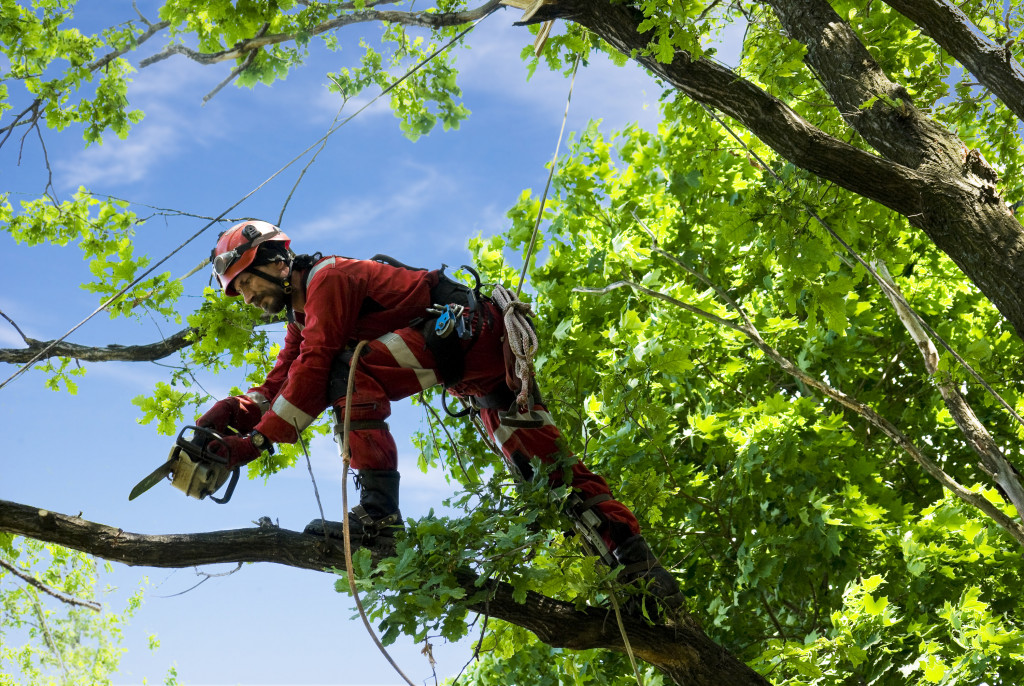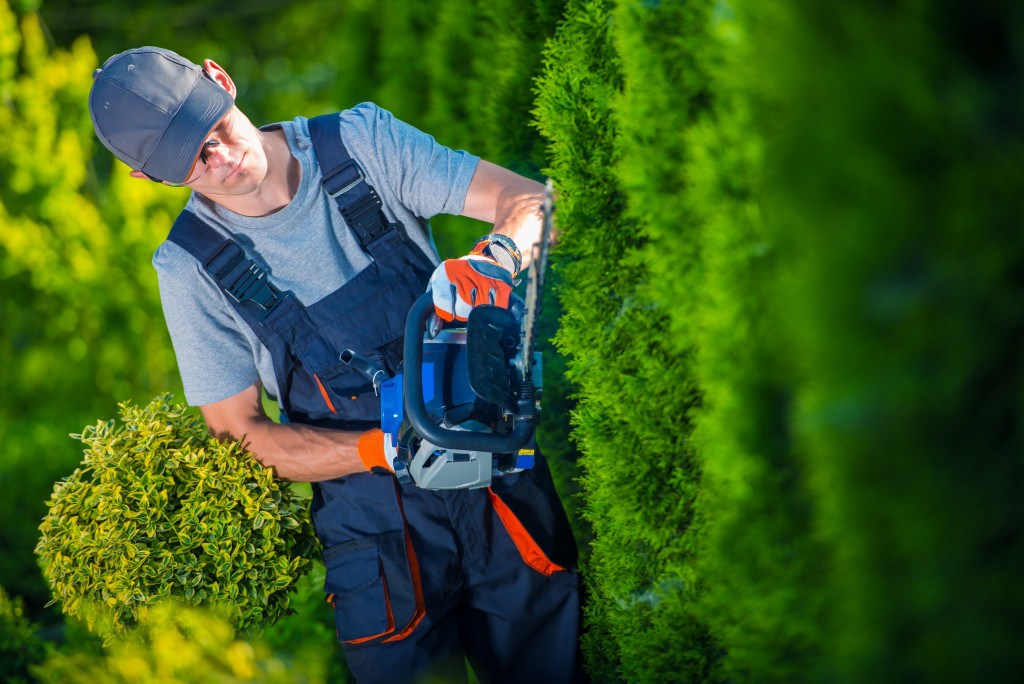- Regular tree maintenance is crucial for tree health, longevity, and appearance.
- Understanding what a healthy tree looks like is essential for early detection of potential issues.
- Different seasons require different care for trees.
- Pruning, soil quality, and water availability are critical to maintaining tree health.
- Professional tree care services have the expertise and equipment to handle complex or risky tasks.
As you look out onto your garden, the role of trees in enhancing your landscape is unmistakable. They’re not just natural sculptures that beautify your space; they’re living entities that contribute to the health and balance of your environment. This guide is designed to help you understand the importance of maintaining healthy trees and the steps you can take to ensure they continue to thrive in your landscape.
The Importance of Regular Tree Maintenance
Healthy trees don’t just happen; they result from consistent care and attention. Regular tree maintenance is crucial for their health, longevity, and the overall appearance of your landscape. Taking care of your trees ensures their beauty and structural integrity and plays a part in maintaining a healthy ecosystem in your backyard.
Understanding Tree Health
Your journey to maintaining healthy trees begins with understanding what a healthy tree looks like. Healthy trees typically have vibrant leaves or needles, sturdy and upright branches, and robust growth patterns. On the contrary, signs of an unhealthy tree might include discolored leaves, brittle stems, or an unusual loss of leaves outside of the typical shedding season.
It would be best to recognize these signs because early detection of potential issues can make a significant difference in the overall health of your trees. Sometimes, a slight change in leaf color or texture can indicate a need for more water, better soil conditions, or even the presence of a disease.
Seasonal Tree Care Tips
Like you swap coats and scarves with the seasons, your tree needs different care throughout the year. In spring, help them bloom by clearing around their base and checking their water needs. Summer is all about keeping them hydrated. Come fall, it’s time to prep them for the cold, and in winter, give them a gentle check-up to ensure they’re weathering the chill well.
Steps for Maintaining Tree Health

Now that you understand the importance of regular tree maintenance and how to identify the health and hazards of your trees, let’s delve into the steps you can take to maintain their health. You, the homeowner, can often do these practical steps, ensuring that your trees remain an integral and vibrant part of your landscape.
Pruning: Techniques and Timing
Pruning is one of the most important aspects of tree care. It involves removing dead, diseased, or overgrown branches to improve a tree’s structure and health. The best time for pruning depends on the tree species and the goal of pruning. Generally, when the tree is dormant, late winter or early spring is a good time for most pruning activities.
Soil and Water: The Foundations of Tree Health
The health of a tree is deeply rooted in the quality of the soil and water availability. Your trees need nutrient-rich soil to thrive. You can improve soil quality by adding organic matter, like compost, which enriches the soil and helps retain moisture.
Professional Tree Care Services: Enhancing Your Landscape’s Beauty and Safety
While you can manage many aspects of tree maintenance, there are situations where turning to professional tree care services is the most prudent choice. Professionals have the expertise, equipment, and experience to handle complex or risky tasks that go beyond essential maintenance, ensuring beyond primary care, ensuring the beauty and safety of your landscape.
The Benefits of Expert Care

Professional arborists can provide difficult or risky services for the average homeowner. This includes dealing with large-scale pruning, treating diseased trees, and safely removing trees that pose a danger. Their knowledge of tree health, soil conditions, and proper pruning techniques is invaluable, especially for ensuring your trees’ longevity and aesthetic appeal.
When to Call the Professionals
Knowing when to call in professional help is critical. If you’re facing any of the following situations, it’s wise to consult a professional:
- Large or high branches that need pruning.
- Signs of disease or pest infestation that are beyond essential treatment.
- Trees that are leaning dangerously or have suffered storm damage.
- Need for specialized care, like shaping or treating rare tree species.
Relying on professional tree care services ensures the well-being of your trees and guarantees your safety and that of your property. While handling essential tree maintenance yourself is empowering, recognizing when to seek expert assistance is crucial to responsible tree care.
Final Thoughts
Enhancing your landscape by maintaining healthy trees is a rewarding journey. It contributes to the beauty of your surroundings and plays a vital role in creating a healthy and sustainable environment. By understanding the basics of tree health, undertaking regular maintenance, and knowing when to call on professional tree care services, you can ensure that your trees remain a cherished part of your landscape for years.



